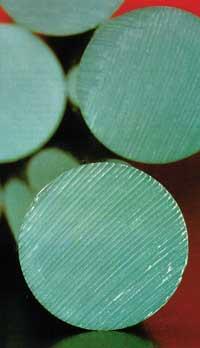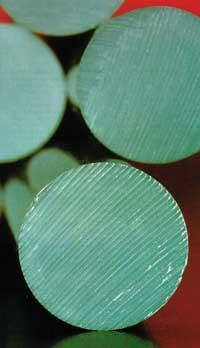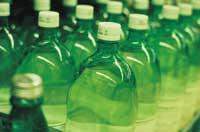Necessary for some, contaminant for others
2004/03/01 Kortabitarte Egiguren, Irati - Elhuyar Zientzia Iturria: Elhuyar aldizkaria

PVC has been the subject of numerous controversies since Greenpeace qualified as a contaminant. The debate is not new, since the arguments of dangerousness began to be launched for a long time by the ecological groups. The plastic industry has always responded harshly to these arguments, making every effort to demonstrate the contrary thesis.
Greenpeace claims that PVC is polluting. From the beginning to the end, from production to disposal, in transformation or in use, the environmental organization states that PVC threatens the environment and our health. According to them, the incineration of PVC waste means the emission of chlorine into the atmosphere, which means, among other things, the destruction of the ozone layer.
On the other hand, PVC contains phthalates, dioxins and similar that act as plasticizers and stabilizers. These additives are thought to be carcinogenic and there are studies that show that they are substances capable of migrating from plastic to food, drink, and the environment in general. For example, to drink bottled water without any additives, these migrations must be taken into account. This risk increases as the temperature increases.
Therefore, PVC residues when burned in incinerating plants are faced with the same problem, since the high temperatures facilitate the release of these substances. However, the plastic industry ensures that in the current waste incineration plants there are resources to avoid these toxic emissions. In fact, in the waste incineration facilities of Paris, Hamburg, Milan, Amsterdam and Pittsfield (Massachusetts) various tests have been carried out, proving that the generation of dioxins is independent of the presence or not of PVC in solid waste.
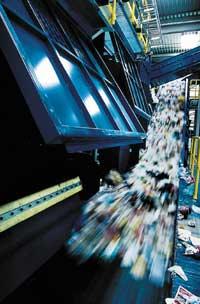
In construction this plastic is the most used for its low cost. However, Greenpeace considers that the price does not include the environmental impact of PVC. As an alternative they propose other materials. Ecologists agree on the need to use more natural local products using imagination and design.
In addition, in some applications, especially as a substitute for PVC, the use of PET polymer is proposed. In the words of the industry, however, there is no reason to rule out PVC if in its production, use and disposal the necessary handling conditions are met.
In short, everyday life also has its risks. However, the use of PVC has been reduced in several applications.
And what is PVC?
PVC (polyvinyl chloride) is obtained by polymerization of a colorless gas and sweet aroma, vinyl chloride. High concentrations can cause dizziness, loss of knowledge, and death. By prolonged inhalation at low concentrations, it can cause pain in the nervous system and liver cancer. Most plastics are mainly composed of carbon and hydrogen. The PVC, on the contrary, in addition to these two, contains chlorine, so it is special. The presence of chlorine gives the polymer polarity and allows the entry of chemical additives.
PVC has been used for a long time. The synthesis of the monomer vinyl chloride was first proposed by Renault in 1835. Years later, specifically in 1872, the German chemist Baumann managed to synthesize PVC. However, this first PVC obtained did not have the right properties. In fact, when heated or in the light of sunlight, scientists found that the links between the molecules were broken and an acid gas was released. Thus, it was seen the need to add some chemical components, with which PVC became resistant and stable to light and heat.
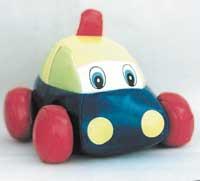
The first commercial PVC was acquired in 1920 in the United States. And today, after polyethylene, it is one of the most well-known, used and comfortable plastics in the world. Therefore, despite the existing controversy about the use of this plastic, it has not yet been discarded or banned altogether. And they continue to produce bottles of PVC water. A few, as in 2002, there were 1,000 tons of PVC and 82,344 tons of PET in Spain.
PVC or polyvinyl chloride is a versatile material. It has multiple and varied applications: water bottles, containers, food collection sheets, credit cards, toys, windows, blinds, pens, cable insulation materials, various hospital appliances, auto parts, etc.
These and many other applications depend on the properties of PVC. In fact, depending on the uses that this PVC will have, certain additives or others are added in the production process.
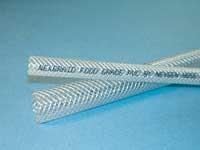
The most important additives are plasticizers, stabilizers, loads, dyes and lubricants, whose aim is to improve the physical properties of PVC. The plasticizers are liquid like oil, and confer rigid PVC flexibility, plastic nature. Therefore, it can be said that there is no specific chemical composition of PVC, since there are many possible compositions.
Despite its taste, PVC has become an essential material in today's society. It is evident that ecologists will continue to carry out campaigns against PVC and that the controversy will persist. Finally, and while the law does not prohibit it, the consumer will be able to choose which.
The main polyester used as a substitute for PVC in bottles and containers is polyethylentereftalate (PET). PET is synthesized by the reaction of tereftalic acid and ethylene glycol, mainly used for fiber formation. The polymerization process of PET and PVC is different, polymerization by stages or by condensation and radical polymerization, respectively. Therefore, the synthesis of both materials involves different risks and/or consequences.

Among the original elements of PET are phthalates, which, like many organic molecules formed by aromatic rings, are considered carcinogenic. In addition, large quantities of phthalates have been found in different analyses made in water bottles. Therefore, although PET has no dangerous additives on several occasions, to what extent can we ensure that it is more innocent than PVC?
PET can be interesting to maintain carbonic liquids such as soft drinks. These cannot be stored in PVC bottles, since being PVC permeable to CO 2 lose pressure. PET is capable of maintaining CO 2. However, the storage of water, for example, does not pose any problem for the use of PVC, so it is doubtful the competitiveness that has been generated between PVC and PET in regard to water bottles. PET is more expensive than PVC. Does the debate no longer resemble competition between industries?
In stores, two types of bottles can be distinguished for their color. The PVC ones are bluish and hard, while the PET ones are transparent and soft.

Gai honi buruzko eduki gehiago
Elhuyarrek garatutako teknologia



